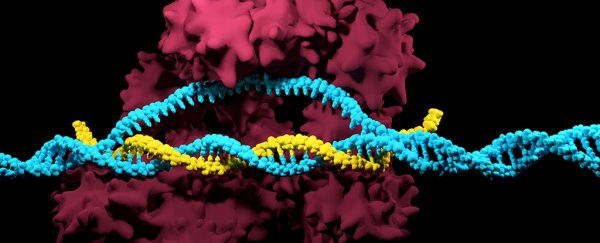An alarming study that claimed the gene-editing technique CRISPR could produce hundreds of unexpected mutations in edited genomes has now been followed up by its authors, who say they cannot replicate their controversial result.
The acknowledgment – which comes in a report of new mice experiments that didn't introduce such mutations – isn't technically a retraction of their earlier findings, but it goes a long way to showing that the alarm bells should probably never have been sounded in the first place.
In the new research, the team conducted whole-genome sequencing on two mouse lines that had undergone a CRISPR-editing procedure.
In their original study, they performed the same analysis – and it was the first time whole-genome sequencing had ever been run on a living organism subjected to CRISPR gene-editing.
But unlike the original results, in the new experiments, no unintended gene variants showed up after the genetic alterations.
This contrasts starkly with the team's first study, in which they found that the two CRISPR-edited mice had sustained over 1,500 single-nucleotide mutations, along with more than 100 larger deletions and insertions that weren't intended.
These variations showed up in 'off-target' portions of the animals' genomes, suggesting that while CRISPR editing could alter genetic code to fix certain abnormalities, it could also introduce unwanted mutations elsewhere in the genome.
"We feel it's critical that the scientific community consider the potential hazards of all off-target mutations caused by CRISPR," one of the team, cell biologist Stephen Tsang from Columbia University said at the time.
That's a valid concern to have, and it's something we certainly should be on the lookout for.
But the problems other scientists had with these alarming findings weren't with the team's 'big picture' approach, but with shortcomings in their method.
Soon after publication, a critique of the original paper by another team pointed out that the two gene-edited mice in the experiment were genetically more closely related to each other than to the third, 'control' mice.
The implication was that the 'unexpected mutations' Tsang's team had detected weren't the result of CRISPR, but simply due to the pre-existing genetics of the mice selected for the study.
And since their sample of animals in the experiment was so small, the results weren't just unreliable, they were misleading – especially since the researchers were vocal about how this kind of analysis hadn't been done before, implying it revealed dangerous shortcomings about CRISPR.
Due to the level of controversy and concern over the original study, the editors of Nature Methods – the journal in which the paper was published – formally stated they were concerned about the veracity of the findings, given an "alternative proposed interpretation is that the observed changes are due to normal genetic variation".
While Tsang's team did not share those concerns, they nonetheless cared enough to revisit the matter in their new research, and their Corrigendum (correction) analysis is a vindication for CRISPR, acknowledging the 'unexpected mutations' hypothesis was, as far as we call tell, a mistake and nothing more.
While defending their "reasonable concern" about such unintended mutations, the authors nonetheless conclude the new results "support the idea that in specific cases, CRISPR-Cas9 editing can precisely edit the genome at the organismal level and may not introduce numerous, unintended, off-target mutations".
All this is a good thing. It's the scientific method at work, revising our interpretation based on new information, and while some are arguing the original paper should finally be retracted, that hasn't happened yet.
Many are probably still angry the original paper was published at all. But for now at least, new data have come to light, and there are still important things we have learned from this research.
The preliminary findings are available at the pre-print site bioRxiv.
Update (3 April 2018): Nature Methods has officially retracted the original study, and you can read the retraction notice in full here.
